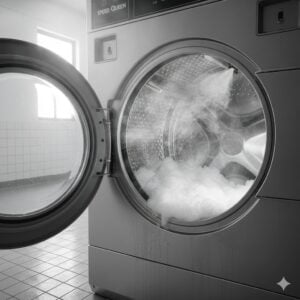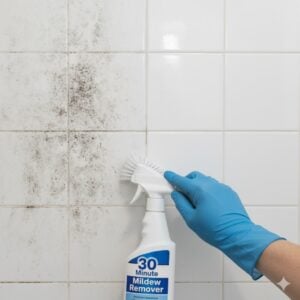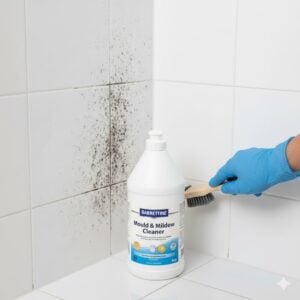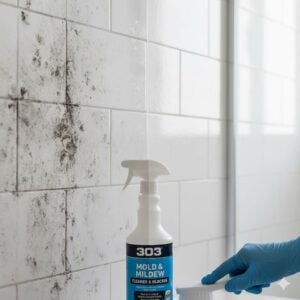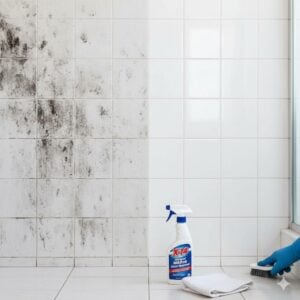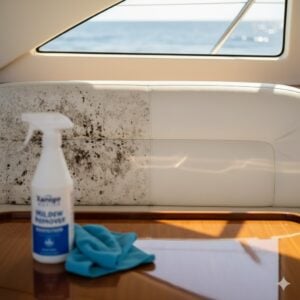Finding black mold on your wall can be alarming. In UAE homes, where high humidity and air conditioning create the perfect environment for moisture, black mold is more common than many people realize. Beyond being unsightly, it carries potential health risks and can weaken building materials if left untreated. When you notice black patches spreading across paint, plaster, or even behind wallpaper, it’s important to understand what’s happening, why it occurs, and what steps you can take to remove it safely and prevent it from coming back. Let’s explore the details together in a natural and practical way.
Table of Contents
ToggleWhat Is Black Mold and Why Does It Grow on Walls?
Black mold, scientifically known as Stachybotrys chartarum, is a type of fungus that thrives in damp, humid environments. Walls become a target because they often trap moisture inside the material, especially if ventilation is poor. In the UAE, condensation from air conditioners, hidden plumbing leaks, or simply high humidity levels provide exactly the right conditions for mold to flourish. Once mold spores settle on a moist surface, they begin to grow, feeding on organic materials like paint, wood, or wallpaper glue. Over time, they expand into dark stains that are difficult to ignore and even harder to clean with simple wiping.
Why Black Mold on Walls Is a Problem
Black mold is more than just an aesthetic issue. For many people, exposure can lead to allergic reactions such as sneezing, coughing, watery eyes, or skin irritation. For those with asthma or weakened immune systems, the risks are higher, sometimes leading to breathing difficulties or persistent headaches. From a structural point of view, mold slowly eats away at wall materials, weakening drywall, plaster, or wood panels. What starts as a small spot can become a wide patch that damages the integrity of your home. In short, ignoring black mold on walls can lead to both health risks and costly repairs.
How to Identify Black Mold on Walls
At first glance, black mold looks like irregular black or dark green spots that spread across the wall surface. Unlike dirt or regular stains, mold often has a slightly fuzzy or slimy texture. In some cases, you might notice a musty odor before you even see the growth, especially in hidden areas behind furniture or wallpaper. Mold thrives in areas that stay damp—corners of bathrooms, behind sinks, around windows, or any spot where condensation builds up. If the stain spreads quickly, or if wiping it with regular cleaning doesn’t work, chances are it’s black mold and not just dust or dirt.
Why Black Mold Appears in UAE Homes

Homes across the Emirates deal with unique conditions that encourage mold growth. High humidity, especially in coastal areas, keeps walls moist for longer periods. Air conditioners, while cooling the air, also produce condensation that can leak onto walls if not properly drained. Plumbing leaks inside walls often go unnoticed until mold patches appear on the surface. Add to this the fact that many modern homes are tightly sealed to keep cool air in, which reduces natural ventilation, and you have the perfect environment for mold to thrive. Understanding these factors helps explain why black mold on walls is such a widespread issue in the region.
What You Can Do About Black Mold on Walls
The first instinct is often to scrub mold away with soap and water, but this usually isn’t enough. While wiping may remove surface stains, the spores often remain inside the wall material, ready to grow back. For small areas, using a solution of white vinegar or hydrogen peroxide can be effective, as these penetrate deeper and kill mold at its roots. It’s important to wear gloves and a mask when cleaning, as disturbing mold can release spores into the air. For larger infestations, professional remediation is the safest option. Experts not only remove the visible mold but also treat the wall and surrounding air to ensure spores don’t return. In many UAE cases, professionals also check for hidden leaks or ventilation problems that keep the walls damp.
Preventing Black Mold on Walls
Prevention is always better than cure when it comes to mold. The key is to control moisture. Start by ensuring your home has good ventilation, especially in bathrooms and kitchens where steam is common. Running exhaust fans after showers, opening windows when possible, and maintaining air circulation can all help. Regularly check your air conditioning system to make sure it’s draining properly and not leaking water onto nearby walls. Inspect walls near plumbing for dampness and fix leaks quickly. Dehumidifiers are also a good investment in humid areas of the UAE, as they reduce the moisture levels in the air, making it harder for mold to grow.
Why Professional Help Is Often Needed
While DIY cleaning can work for small mold spots, black mold on walls often spreads deeper than you can see. Professionals use specialized tools to detect hidden moisture and apply treatments that not only clean the surface but also kill spores within the wall material. They may also apply protective coatings to prevent regrowth. In serious cases, sections of drywall or plaster may need to be replaced. In the UAE, where mold problems are common, professional services also bring peace of mind, ensuring your home is safe, hygienic, and protected against future outbreaks.
Living Safely After Mold Removal
Once black mold is gone, your job doesn’t stop there. Maintaining a fresh, dry environment ensures it won’t return. Keep an eye on areas that were previously affected and clean them regularly with mold-resistant products. Monitor humidity levels, ideally keeping them below 60%. Make sure air conditioning systems are serviced on time and ventilation is strong throughout your home. With consistent care, you can enjoy a clean, safe living space free from the worry of mold growth.
Conclusion
Black mold on walls is a serious issue that affects many UAE homes due to humidity, condensation, and hidden leaks. It’s more than just a cosmetic problem—it threatens health and damages property if left unchecked. By recognizing it early, addressing moisture sources, and choosing the right removal method, you can take control of the situation. Small spots may be manageable with safe DIY cleaning, but for larger problems, professional remediation ensures the mold is eliminated at its roots. With us offering guidance and you taking simple steps to protect your home, your walls can stay clean, safe, and mold-free for the long term.








